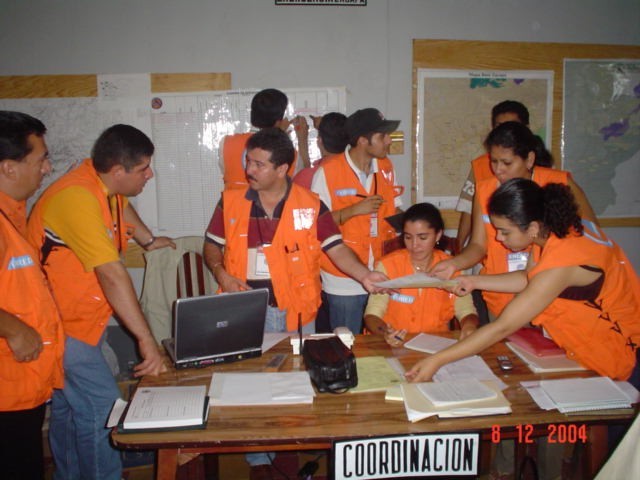
In 1996, Guatemala's government established CONRED, an agency designed to prepare for, prevent and mitigate disasters. Over the last decade, CONRED has organized and trained a network of regional and local volunteers and service people ready to respond to disasters at a moment's notice.
In December 2004, CONRED tested its emergency response readiness in a four-day nationwide exercise supported by USAID. The exercise was designed to assess CONRED's capacity to reduce the number and severity of disasters and then help CONRED further improve on its progress.
The event that triggered the exercise was a fictional 7.5-magnitude earthquake near Escuintla on the south coast. Planned over several months with USAID and the Kansas National Guard, the exercise presented emergency teams at Guatemala's eight regional emergency operation centers with 23 response scenarios, including evacuations, building collapses, airplane crashes, fires, mudslides and hazardous material spills.
Fire fighters and rescue teams organized their rescue efforts cooperatively. Search dogs were used to locate and rescue victims trapped in collapsed buildings. Rescuers used cement drills, saws and cutters to extract cadavers from rubble or collapsed structures. Problems with communications were expected, and occurred, but they did not adversely affect the overall exercise. Evaluators who observed the exercise agreed: considering the size and scope of the operation, it was a true success.







Comment
Make a general inquiry or suggest an improvement.